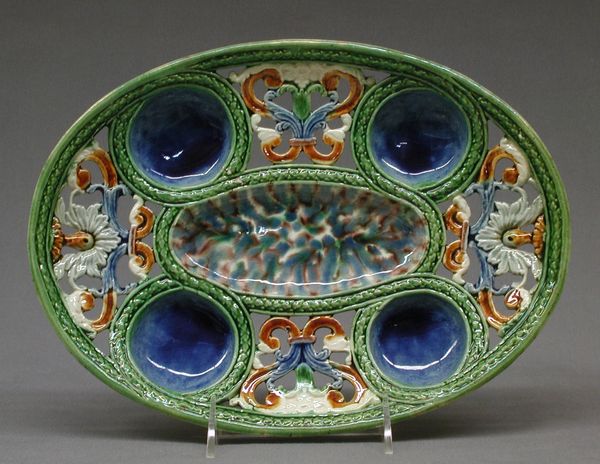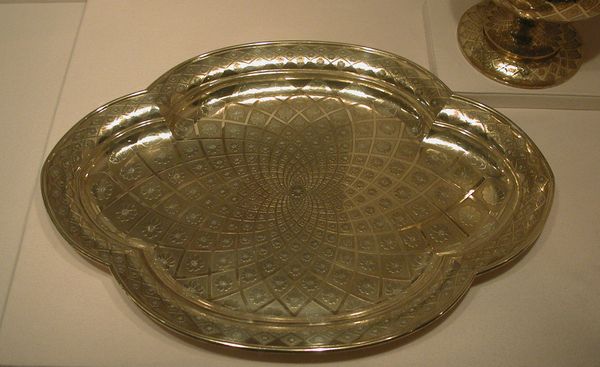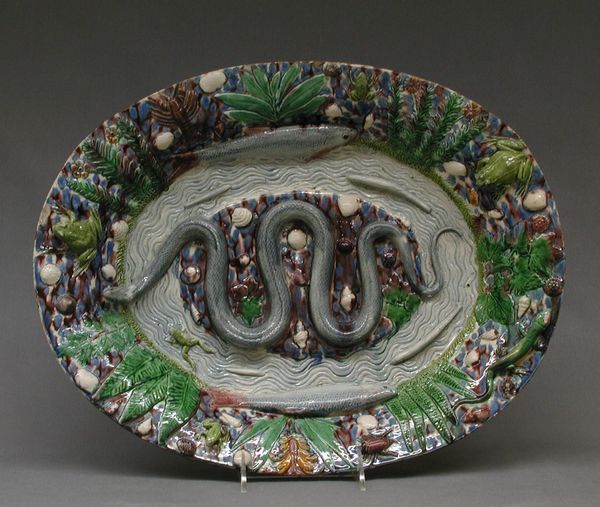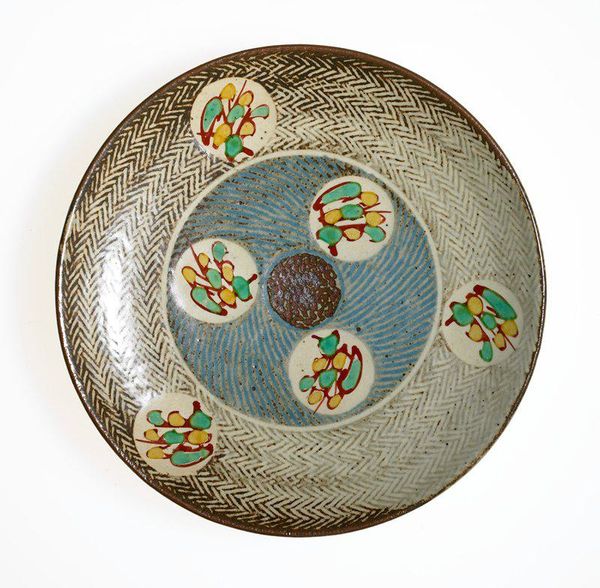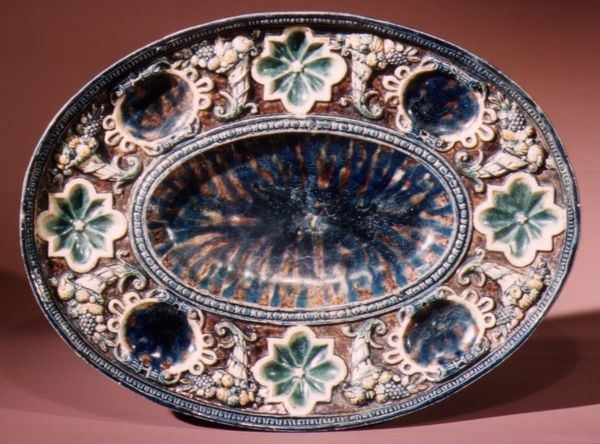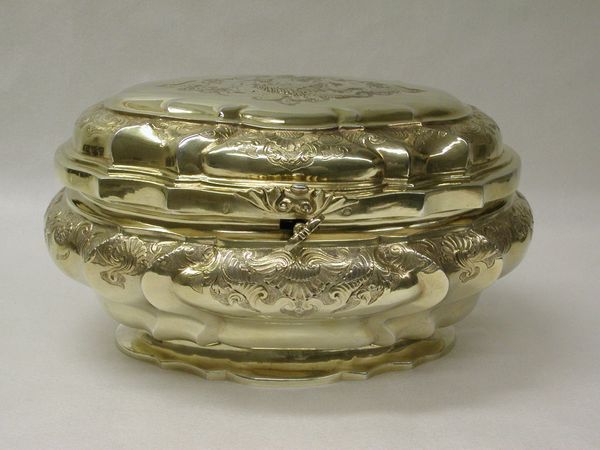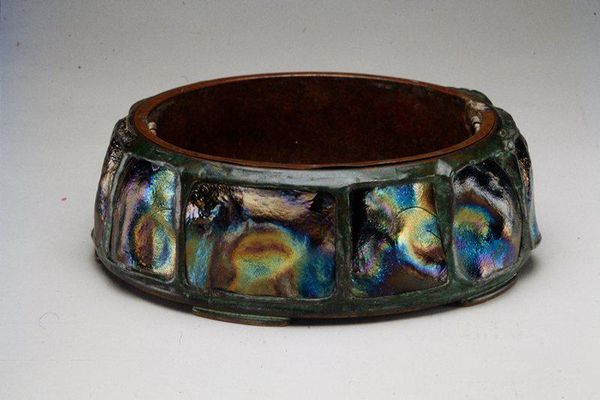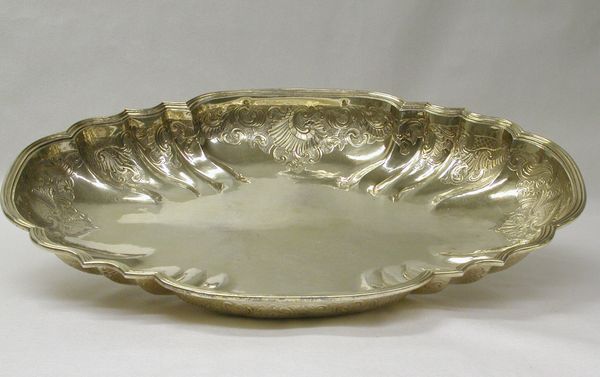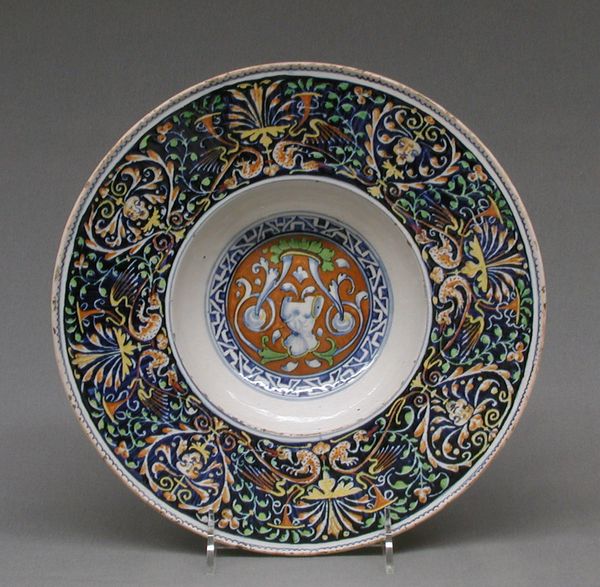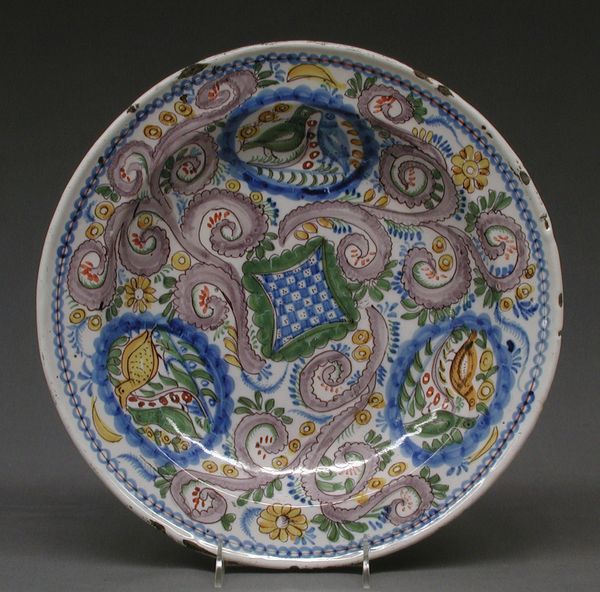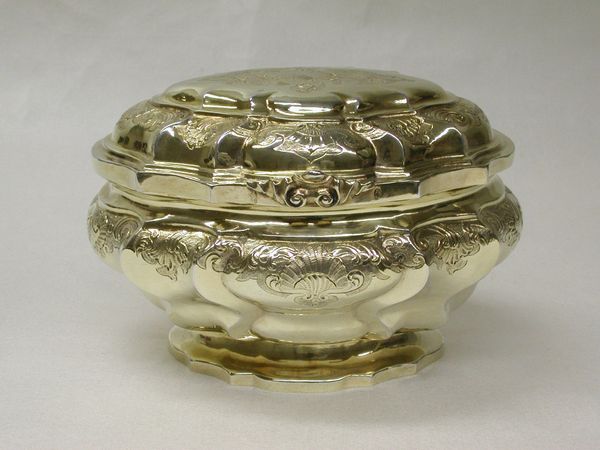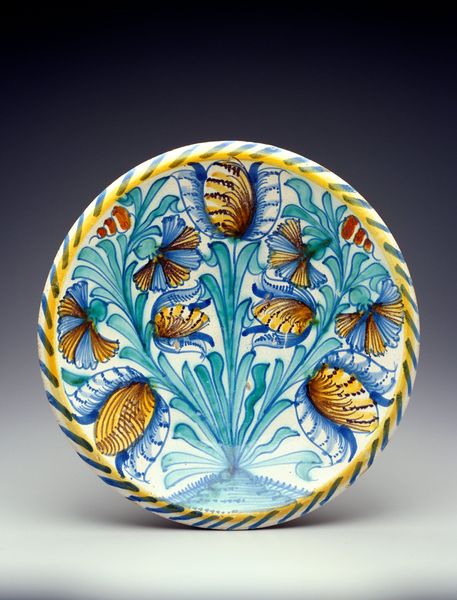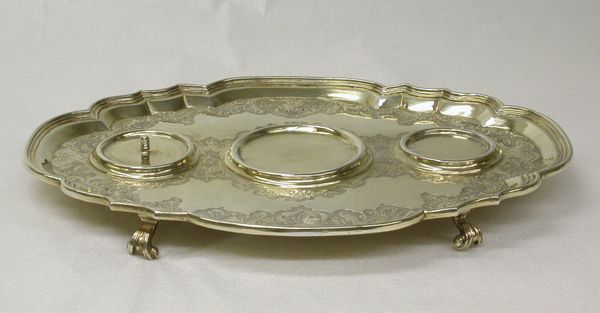
relief, ceramic, sculpture
#
baroque
#
relief
#
ceramic
#
sculpture
#
ceramic
#
decorative-art
Dimensions: Overall: 9 1/8 × 6 5/16 × 1 7/8 in. (23.2 × 16 × 4.8 cm)
Copyright: Public Domain
Curator: Welcome! Before us is a ceramic dish dating from the mid-17th to mid-18th century. The piece is housed here at The Metropolitan Museum of Art, and it's believed to have been created by Bernard Palissy or his workshop. Editor: First thought? Kind of gloomy, in a delicious way! The colours are deep, moody blues and browns. It feels both precious and practical somehow, doesn’t it? Like, I could imagine it displayed in a grand cabinet but also holding something… maybe olives? Curator: You know, that tension is something Palissy excelled at. He was deeply involved with the emerging scientific discourses of the time, particularly regarding naturalism, yet his style remained firmly rooted in Baroque decorative arts. These oval wells aren’t just functional divisions; they evoke scientific display cases. Editor: Oh, I like that, a display! And those little cherubs nestled around the edge… they're adorable, if a little somber. What a strange juxtaposition, though; scientific observation with these rather sleepy, ethereal figures. Is there something else in play beyond naturalism here? Curator: Certainly. During the Baroque period, we see an increase in elaborate ornamentation paired with religious iconography, as the Council of Trent encouraged this form of devotional imagery, as we see even in what we'd call an everyday object like a serving dish. It becomes both a status symbol and, if you will, a display of faith. Editor: So, it’s beauty meant to uplift and perhaps a means to persuade. Looking at the composition again, I think that tension of practicality and purpose is really what hooks me here. There's an unspoken, complicated story baked right into the clay. Curator: Precisely! It speaks to how objects of art carry cultural weight, going far beyond their function to reflect the world they were created within. Editor: And for me? Well, it whispers about seeing beauty even in the somewhat melancholic, which is not a bad thing to have on your kitchen table, frankly.
Comments
No comments
Be the first to comment and join the conversation on the ultimate creative platform.
